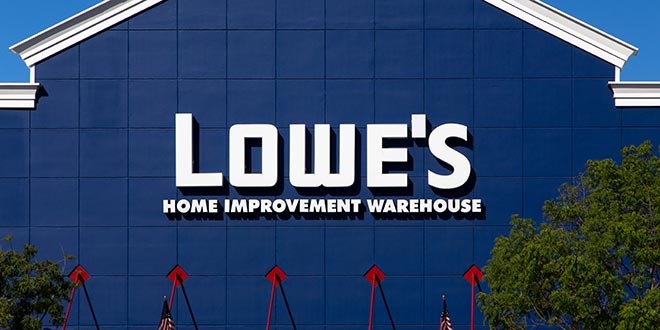Lowe’s recently got praise from reporter, business advisor and author Ian Altman writing for Forbes, who used the big box retailer as an example of how to get good customer service to last from the sale to the end of a product’s life.
In many places, the big boxes are catching up with independents in the quality of the customer service they offer—so taking note of lessons to learn from others’ exemplary work can’t hurt.
Here’s what Altman has to say:
“Lowe’s contacted us multiple times to set expectations for delivery of our freezer. Upon arrival, the delivery person was pleasant, and put booties on his feet and covers on the floors to ensure they didn’t damage anything. He removed the doors from the hinges, and explained that although there was sufficient room, he wanted to be sure he didn’t scratch anything. After installation, he asked, ‘Can you please confirm that nothing in your home was scratched or damaged?’ These folks were professionals.”
Lowe’s also followed up later to be sure everything was still in working order, Altman says. At another big box business, however, he had the opposite customer service experience.
Here’s what you can learn from the good and the bad, he says:
- Maintain Control: “If you put too many layers between you and the customer, you can easily struggle to solve a real customer issue quickly and efficiently. Lowe’s took on their own centralized delivery to avoid those gaps in communication.”
- Communicate Expectations: “It is not enough that your salespeople and the customer discuss expectations. You need to pass those expectations along to your execution team. “
- Set Standards for Service Excellence: “If you are in the business of selling a product that gets used seven days per week, you probably should have a process to solve customer issues over the weekend.”
- Anticipate Problems: “Problems will arise, and if you define what happens in a given situation, then your team can follow the playbook and deliver success. The delivery folks from Lowe’s probably learned that protecting floors and removing doors from hinges leads to fewer claims and more happy customers. … Ask your people in the field what they see as potential problems and how to solve them.”
- Follow Up: “Your job is not done when the sale is made. … When you follow up with the customer to ensure satisfaction, you get repeat and referral business. It’s that simple.”
 Hardware Retailing The Industry's Source for Insights and Information
Hardware Retailing The Industry's Source for Insights and Information






